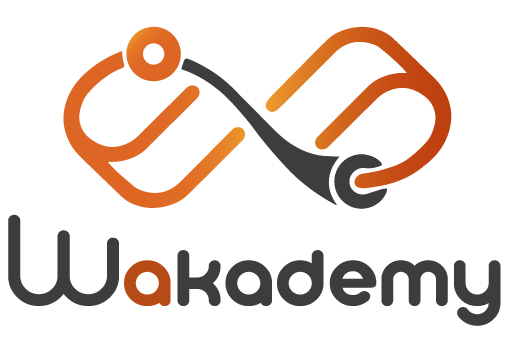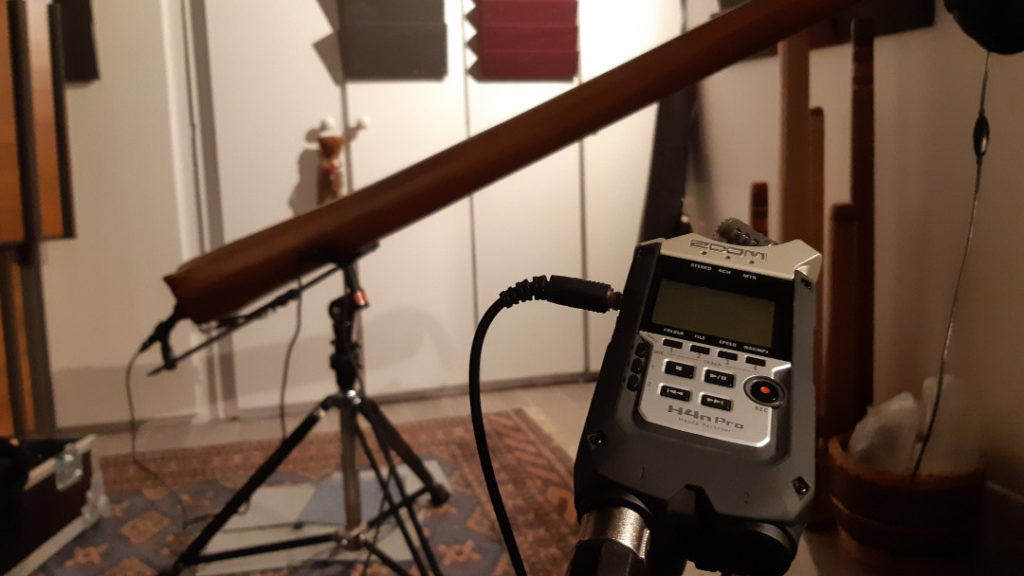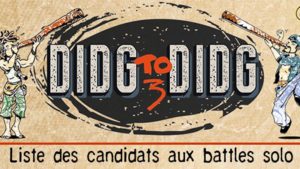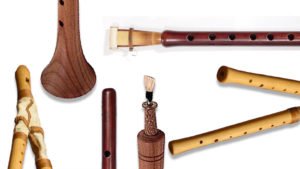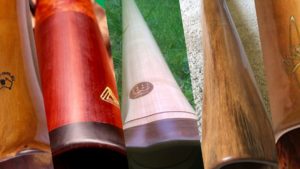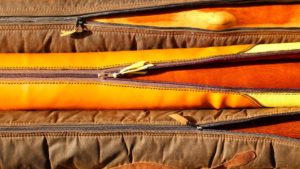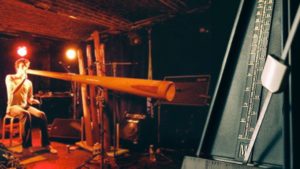What’s better for improvement than being able to capture all the subtle modulations you produce on the didgeridoo? With a recorder, it becomes possible and quite easy! Moreover, compact digital recorders (battery-operated) are now available at a very good price-to-quality ratio. You then have a portable studio directly in your backpack, isn’t that great?!
A worthy successor to Minidiscs, this tool has become an excellent means for me to progress with the didgeridoo. Their advantages can be summed up in three criteria: simplicity, completeness, and portability!
The ZOOM H4n: a versatile recorder
First of all, let’s talk about the choice of the recorder! Personally, I opted for the Zoom H4n, a multi-track model with two built-in microphones, and on which you can add two external microphones. Of course, there are other quality models available, but since Zoom is a reference in the market, it convinced me. It is also widely used in the world of portable sound (journalism, musicians…).
If you want to know more about the Zoom H4n, here’s a video that will show you how it works:
Before discussing the three situations in which I use it, I wanted to share with you my setup that suits my needs.
A microphone and headphones to improve your didgeridoo recording
I recommend two other tools to adapt the Zoom for recording your didgeridoo:
- Essential: audio feedback via headphones (earphones can suffice to start with). I opted for a “drummer” version, soundproof to external noises to enhance listening. I have the Beyerdynamic DT 770M, a studio classic recommended to me by Dubravko Lapaine.
- Recommended: an external microphone. Even though the Zoom H4n has built-in stereo microphones (which will suffice for many of you), I personally bought an external microphone that I position with a cable at the bell’s exit to keep the zoom by my side. For the microphone, I use the AKG 535, which is versatile and suitable for the didgeridoo.

In this setup, you only need to follow these steps:
- First, plug the headphones into the zoom.
- Then, plug the microphone using a two to three-meter cable (XLR or jack type).
- Place the microphone at the didgeridoo’s bell exit (also read: Where to find a tripod for your didgeridoo and how to customize it).
- Keep the Zoom next to you to have all the settings at hand.
You are now ready to let the magic happen and experience my three main uses of the Zoom H4n with a didgeridoo!
1. Hearing all the sonic subtleties of my didgeridoo
When I started playing, I lived in an apartment… And unfortunately, I couldn’t play at home because of the neighbors! So I used to go play outside, in the woods.
If you’ve ever played outside, you’ve probably quickly realized that it’s hard to hear yourself. The sound seems to “get lost,” the bell is distant from the ears, and it’s difficult to grasp the sound variations you make (especially at the beginning!).
Of course, this issue is less problematic indoors. Because then, the most natural solution to benefit from comfortable sound feedback is to place the didgeridoo bell facing a wall angle, in a curved receptacle, or in a small enclosed room (like a bathroom…).
But thanks to my recorder, whether indoors or outdoors, I can clearly hear all the variations I produce. This listening comfort has allowed me to make connections between technical modulations and their musical rendering.
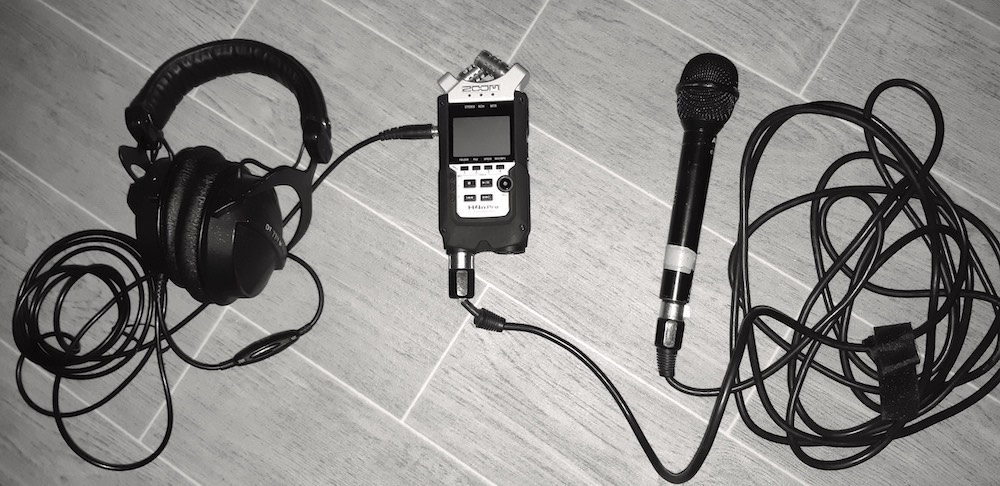
2. Never forgetting a didgeridoo rhythm again
I don’t know about you, but I love long playing sessions during which I let go, allowing me to explore the possibilities of this instrument that is perfectly suited to this exercise. Thanks to these exploration times, I regularly discover new sounds or rhythms to deepen!
At the beginning, I looked for a way to remember these rhythms from one session to another. I first tried to transcribe them in writing (onomatopoeia, beatbox, measures…). But when reading them back, I often had trouble finding the initial idea (didgeridoo writing could actually deserve a separate article!).
Then, I started using the zoom during my practices to record myself. And even today, during my rehearsals, I record and archive short phases of 30 seconds to 2 minutes. Upon listening, they serve me to deepen and evolve my playing, but also as sources of inspiration for my compositions.
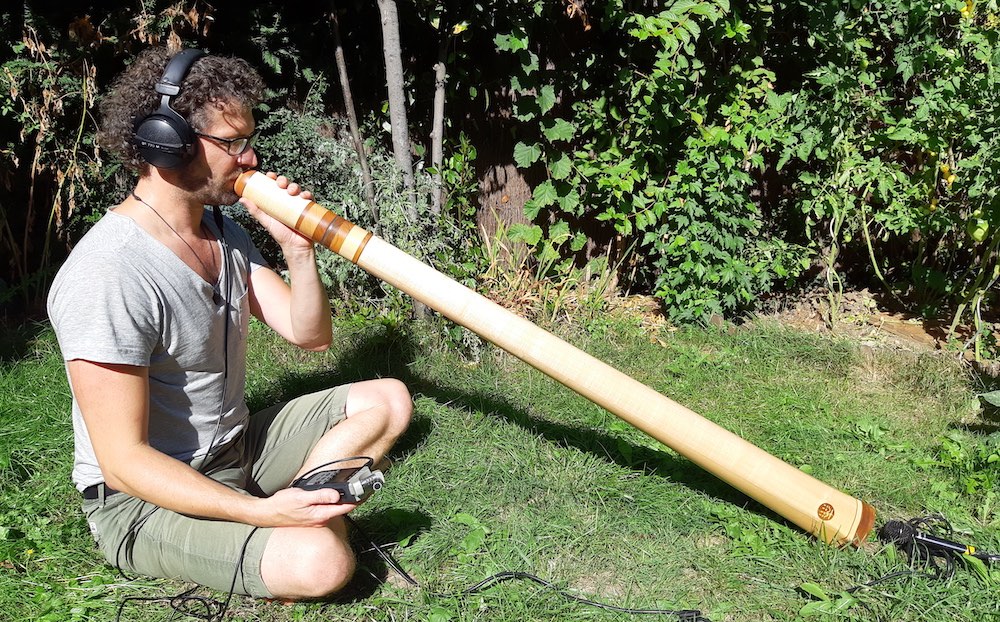
3. Recording multi-tracks with other musicians
So far, I’ve talked about the times when I played alone. But another positive point of the H4N is its multi-track feature! Behind this term hides the possibility of being able to listen to up to three different tracks through headphones while playing and recording simultaneously on the fourth!
Thus, when we can’t meet to rehearse with Pranavibes or UCDidgs, I can simulate a rehearsal with several people. To do this, I integrate into the recorder Antoine’s guitar part or Julien’s didgeridoo to play over it. This function has been very practical for me to refine and transmit my compositions to the other band members. It also allowed me to rehearse remotely during lunch breaks at work in the middle of the woods or other improbable places!
You now know my way of working with the didgeridoo thanks to my recorder. This tool is just as indispensable to me as the metronome for structuring my musical sessions. I would be curious to know if you also record your sessions?! Share your experience or ask your questions in the comments! I will be happy to answer them!

